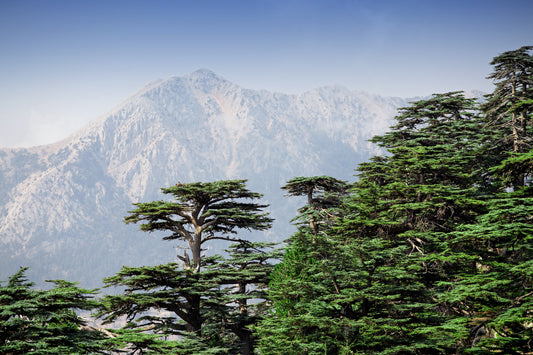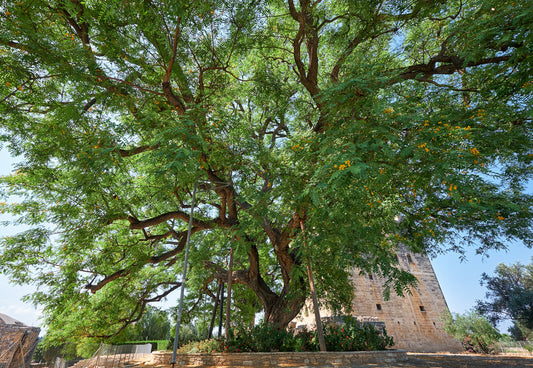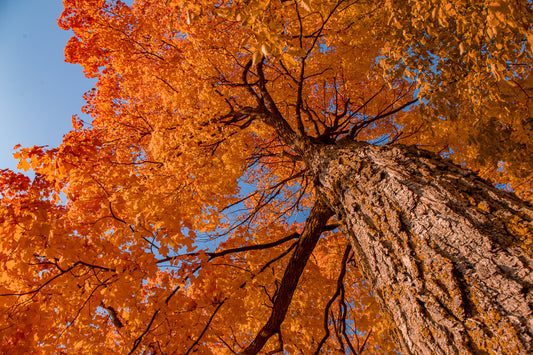Cedar
Introduction
For centuries, the cedar tree has held a cherished position in both the natural landscape and the realms of human creativity and symbolism. Cedar, with its alluring aroma, insect-resistant properties, and beautiful grain, has been extensively utilized in construction, art, and spiritual practices across diverse cultures.
Perhaps one of the most poignant instances of the cedar's cultural significance can be seen in Haida mythology, as immortalized in the renowned sculpture, "The Raven and the First Men" by Bill Reid. Carved from a gigantic block of yellow cedar, the sculpture depicts the Haida creation myth where Raven, the omnipotent trickster, finds a clamshell with tiny human beings inside. He coaxes them out, thus enabling the beginning of human life.

Bill Reid's masterpiece, "The Raven and the First Men,"
This intricate piece, which now sits in the Museum of Anthropology at the University of British Columbia, serves as a powerful reminder of cedar's integral role in human storytelling and cultural expression.
Through this article, we'll traverse the realms of botany, ecology, and cultural narratives that surround the cedar tree, aiming to delve into its rich history and significance while shedding light on its ecological importance and the modern challenges it faces.
The Cedar Tree
Cedar belongs to several genera in the coniferous plant family, primarily the Cedrus genus. The four species within Cedrus are native to the mountains of the western Himalayas and the Mediterranean region. However, several other species, like the "Red Cedar" and "White Cedar," are commonly referred to as cedars but belong to different genera.
Cedar trees are evergreen, meaning they retain their needle-like leaves throughout the year. Known for their robust size and majestic presence, cedars can reach heights of up to 130 feet. Their spreading branches form an irregular, open crown, while the bark is brown to grey, typically fissured and peeling in longitudinal strips.

Cedars are monoecious – both male and female cones are found on the same tree. Male cones are smaller and produce pollen, while female cones are larger, erect, and hold the seeds. The cones mature over one to three years, releasing the winged seeds that get dispersed by the wind.
The wood of cedar trees is highly valued for its rich color, straight grain, and resistance to decay. Cedar heartwood exhibits hues from deep brown to pale yellow, and its resinous scent is not only pleasant but also serves as a natural deterrent to pests. This combination of beauty, durability, and practicality has made cedar a beloved material for various applications.
Cedar in Art, Architecture, and Craft
Cedar's versatile properties have long been recognized by artisans, builders, and architects across civilizations. Ancient Egyptians used cedar wood for constructing royal sarcophagi, while the Greeks and Romans prized it for its aromatic properties, using it to store scrolls and clothing.
In the Pacific Northwest, indigenous peoples like the Haida have had a profound relationship with the "Red Cedar," or Thuja plicata. It has been utilized in every aspect of their life – from constructing longhouses and totem poles to crafting canoes, baskets, and ceremonial objects. Cedar bark was woven into mats, clothing, and regalia, serving both utilitarian and symbolic purposes.
Bill Reid's masterpiece, "The Raven and the First Men," exemplifies the spiritual connection between the Haida people and the cedar tree. The sculpture's intricate details and profound narrative encapsulate a significant cultural story, bringing to life the ancient cedar from which it was carved. By doing so, it forges a bridge between the physical material and the spiritual narrative, the natural world and human creativity.
The Cedar Forest
As previously mentioned, cedar trees can be found all over the world, from the Mediterranean basin to the Himalayas, the Americas, and even parts of Africa. While each type of cedar tree has adapted to its own specific habitat, most thrive in cooler climates and can be found in mountainous regions, typically between 1,000 and 2,000 meters in altitude, though some species can grow as high as 3,500 meters.
Western Red Cedars, for instance, form expansive forests in the Pacific Northwest of the United States and Canada. They thrive in the damp coastal climates and can often be found alongside Douglas Fir and Sitka Spruce. Conversely, the Cedar of Lebanon, another type of true cedar, prefers rocky terrains and thrives in higher altitude settings. It is most commonly found in the mountains of the eastern Mediterranean region.
The atlas cedar is another popular species, native to the Atlas Mountains of Morocco and Algeria in North Africa. These trees can withstand much drier climates than their North American counterparts and often form forests at high elevations, sometimes as high as 2,400 meters.
These majestic trees can reach impressive heights, with some towering at more than 60 meters tall. Their thick, scaly bark and dense foliage make them an awe-inspiring sight in their native forests. A mature cedar forest, filled with these towering giants and interspersed with smaller plants, ferns, and mosses, is a sight that can inspire awe and a sense of humility in the face of nature's grandeur.
As all parts of an ecosystem are interacting with each other, cedar forests also play a critical role in shaping the climate of their respective regions. By intercepting rainfall, reducing run-off, and controlling soil erosion, they maintain the integrity of the water cycle. These trees act as natural sponges, absorbing water during the rainy season and slowly releasing it during drier periods. This process ensures a steady flow of water in mountain streams, securing a constant supply for the valleys and plains below.
In the harsh winter months, cedar forests create microclimates within their boundaries. The dense foliage and the tall, coniferous forms of the trees help reduce the impact of strong, cold winds and moderate the temperature, making these forests a haven for numerous animal species during the snowy season.
As evergreen conifers, cedar trees shed their needle-like leaves all year round. These leaves are rich in acidic compounds, which, when decomposed, make the soil beneath the trees more acidic. This alters the makeup of the microbial community in the soil, favoring certain species of bacteria and fungi that evolved specifically to thrive in this environment.
All these facts make cedar forests a biodiversity haven. They serve as a sanctuary for a variety of bird species, many of which are threatened or endangered. Among them are the Marbled Murrelet, which nests almost exclusively in old-growth Western Red Cedar and Sitka Spruce forests, and the Spotted Owl, which favors these woods for nesting. The cedar's soft, decaying wood offers the perfect environment for the pileated woodpecker to carve its distinctive rectangular nest holes. As the woodpecker moves on, these cavities provide homes for other birds, small mammals, and large insects.
On the forest floor, the cool, moist conditions under the cedars offer an ideal habitat for amphibians like the Red-legged Frog and the Rough-skinned Newt. Small mammals like voles and shrews find refuge in the rich understory and leaf litter. Black bears often den in hollow cedars for the winter, while Roosevelt elk use the forests as cover and forage during harsh winter months.
Even aquatic life reaps the benefits of cedar forests, as fallen cedar logs in streams create pools and provide cover for fish species such as salmon and trout, providing critical spawning habitats and protection from predators.
The state of cedars worldwide
The Cedars of God, a precious enclave nestled in the Kadisha Valley of Bsharre, Lebanon, serve as a potent symbol of the relentless march of deforestation not only in their native region but across the entire globe. These majestic Lebanon cedars, celebrated in the ancient Epic of Gilgamesh and once standing tall and proud on the slopes of Mount Lebanon, represent an enduring and intertwined narrative of natural splendor, human exploitation, and relentless resilience.
Their story, though geographically rooted in the Eastern Mediterranean, resonates with similar tales from cedar forests in North America and North Africa, indeed from all forests worldwide. Each tree cut down in these forests is not a local loss but a global one, a piece of the world's ecological heritage that can never be fully recovered.
From the Phoenicians who harnessed the strength and durability of cedar wood for their merchant fleets to the Egyptians who used the resin for mummification and the wood to create early hieroglyph-bearing papyrus, this tree has been a silent yet integral part of human civilization's journey.
King Solomon sought the prized cedar timber for constructing the revered Temple in Jerusalem. Even the mighty Roman emperor, Hadrian, recognized their significance, claiming these cedar forests as an imperial domain. More recently, the Cedars were venerated by the Christian monks of the nearby monasteries, standing as silent, enduring sentinels of faith.
However, despite temporary halts and periods of conservation, the relentless exploitation by successive civilizations, from the Assyrians and Babylonians to the Ottoman Empire, took a devastating toll. The once sprawling cedar forests, which had been the toast of poets, the pride of kings, and the heart of seafarers, became a symbol of environmental decline.
Today, the Cedars of God stand as a haunting but beautiful World Heritage Site. Rigorously protected, reforestation efforts are spearheaded by the "Committee of the Friends of the Cedar Forest" since 1985, seeking to restore the forest's former glory. As with the cedar's slow, steady growth, the fruits of these conservation labors will only be visible decades from now. However, even in its present state, the cedar forest offers a unique spectacle, especially in winter, when snow cloaks the trees, rendering an ethereal vista.
Conclusion
While definitely sobering, the story of this forest, which witnessed entire empires rise and collapse and now is barely holding onto life, should not be seen as sad. It highlights the power of resiliency and the potential for renewal. Each new cedar sapling growing in the Kadisha Valley of Bsharre, each bud breaking free from its constraints, serves as a symbol of our ability to rectify the errors of our past. The revitalization of the Cedars of God underscores our capacity for positive change, highlighting the necessity for robust, enduring conservation strategies on a global scale.
Our world's forests are crucial to our survival and that of countless other species. Their fate and ours are irrevocably intertwined. It is our collective responsibility, our shared duty, to safeguard and rejuvenate these precious ecosystems. We must not only protect and restore, but we must also respect and coexist, cultivating a future where progress does not come at the expense of our natural world. In the grain of every piece of cedar furniture, in the hue of every sculpture made from them, we find a message of hope, a blueprint for restoration, and a testament to the enduring relationship between humanity and nature.
Article by: Andrei Mihail, see more about the author here




